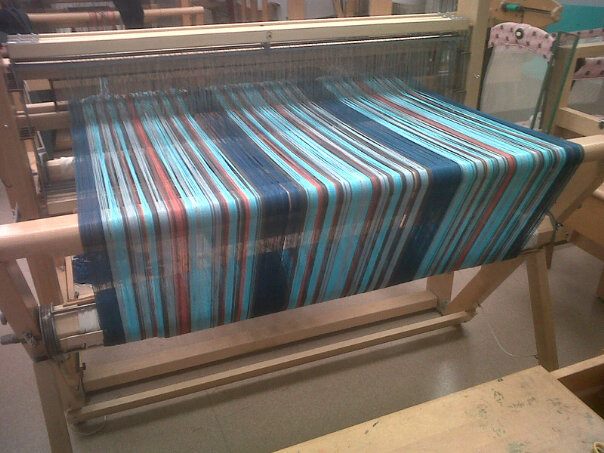.JPG) |
| Mentor and apprentice pair Jennifer Morgan and Virginia Stoddart in Jennifer's printing studio. |
From birch brooms to beading, traditional skills at risk of being lost in Newfoundland and Labrador just got a boost from Heritage NL.
Twenty new projects from all across the province that pair a learner with an experienced craftsperson have been given the green light by Heritage NL, the provincial agency that deals with historic places and living heritage. This adds to a set of partnerships established earlier in the year.
The Heritage NL Mentor-Apprentice Program is a one-on-one immersion program that provides funding up to $10,000 to support the teaching of endangered crafts and skills from an established mentor to an apprentice craftsperson or tradesperson.
“The traditional craft sector is an important part of our contemporary economy, especially in rural areas,” says folklorist Dale Jarvis, Executive Director of Heritage NL. “We are excited to support these tradition bearers and entrepreneurs in learning and promoting skills and crafts that otherwise might fade away.”
The participants will have up to a year to work together, teaching and learning a variety of skills including spruce root basket making, blacksmithing, coopering, and sealskin work. Applications for this pilot program are now closed. For more information about the Heritage NL Craft at Risk List or Mentor-Apprentice Program see heritagenl.ca/programs/craft-at-risk/.
This program is supported by the Labour Market Partnerships program, Department of Immigration, Skills and Labour, Government of Newfoundland and Labrador.
The approved mentor/apprentice projects are as follows:Beadwork
Mentor Bonnie Miller, Norris Arm North, with apprentice Starlynn Shears-Osmond, Grand Falls-Windsor.
Blacksmithing
Mentor Ian Gillies, Conception Bay South, with apprentice Sarah MacAulay, Mount Pearl;
and
Mentor Dennis Flood, Change Islands, with apprentice Timothy Penton, Joe Batt’s Arm.
Coopering
Mentor Lester Cooper, Trinity, with apprentice Darren Hookey, Trinity.
Bodhran making (Irish frame drum)
Mentor Paddy Mackey, Flatrock, with apprentice Bryan Poirier, St. John’s.
Komatik building (winter sled with runners)
Mentor Adam Greening, Port Blandford, with apprentice Joey Efford, Port Blandford;
and
Mentor Walter Fowler, Capstan Island, with apprentice Peter Fowler, South Branch;
and
Mentor Alfred Winters, Happy Valley-Goose Bay, with apprentice David Chaulk and Francine Winters, Happy Valley-Goose Bay.
Letterpress printing
Mentor Duncan Major, St. John’s, with apprentice Katie Butler Major, St. John’s;
and
Mentor Jennifer Morgan, St. John’s, with apprentice Virginia Stoddard, Bay Bulls;
and
Mentor Marnie Parsons, Tors Cove, with apprentice Abigail Hann, Port Blandford.
Mi’kmaq style moccasins
Mentor Loretta John, Conne River, with apprentice Kevin Drew, Conne River.
Millinery
Mentor Charlotte Reid, St. John’s, with apprentice Erica Dawe, St. John’s.
Running birch brooms
Mentor Richard Park, Gillams, with apprentice Michelle Park, Corner Brook.
Sealskin work including slippers and mittens
Mentor Barb Rumbolt, Mary’s Harbour, with apprentice Niki Greeley, Mary’s Harbour.
Spruce root basket making
Mentor Eileen Murphy, Corner Brook, with apprentice Sandi Yates, Gillams.
Weaving skills
Mentor Morgaine Parnham, Bonavista, with apprentice Sylvie Mitford, Bonavista.
Window/Door Making
Mentor David Winsor, Broad Cove, with apprentice Ben Marx, St. John’s.
Wriggle fence building
Mentor Guy Barnable, Ferryland, with apprentice Eric Escudero, St. John’s;
and
Mentor Jody Chaulk, Bloomfield, with apprentice Gracie Russell, Lethbridge.
For more information or photos, contact:
Dale Jarvis
Heritage NL
dale@heritagenl.cahttps://heritagenl.ca/programs/craft-at-risk/
.jpg)





.JPG)
.jpg)

.JPG)
























